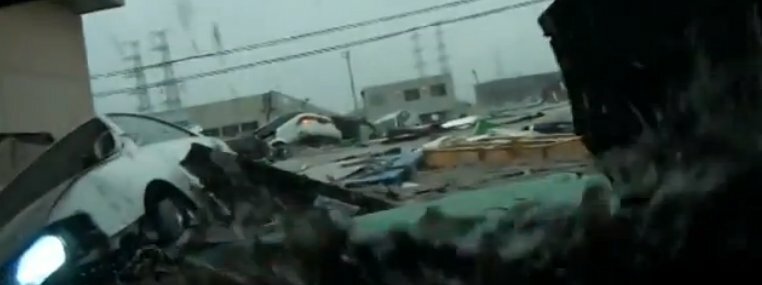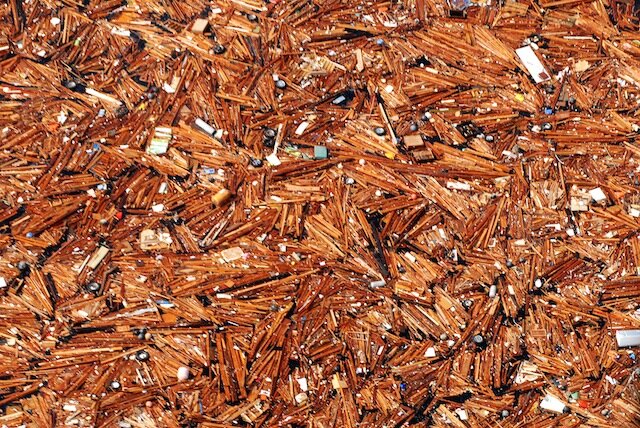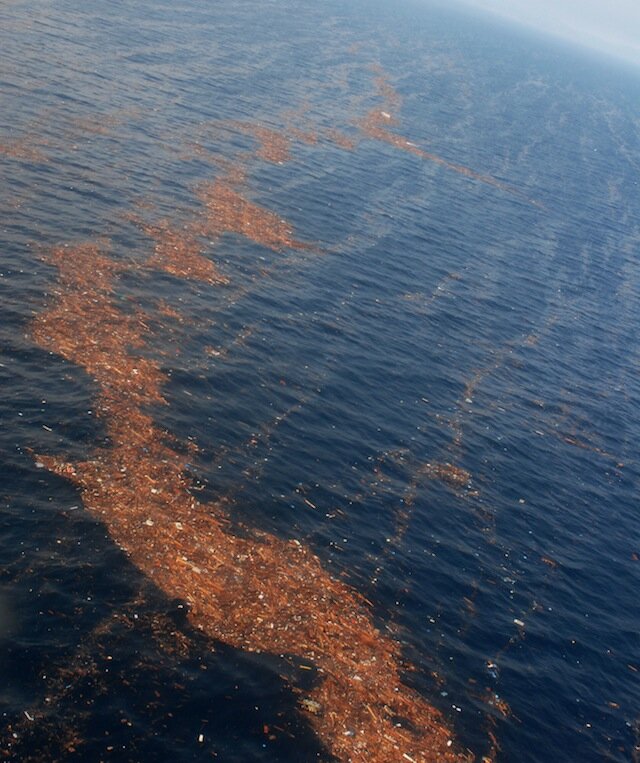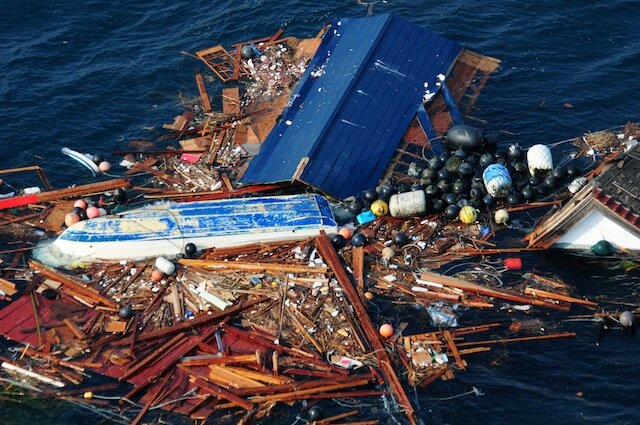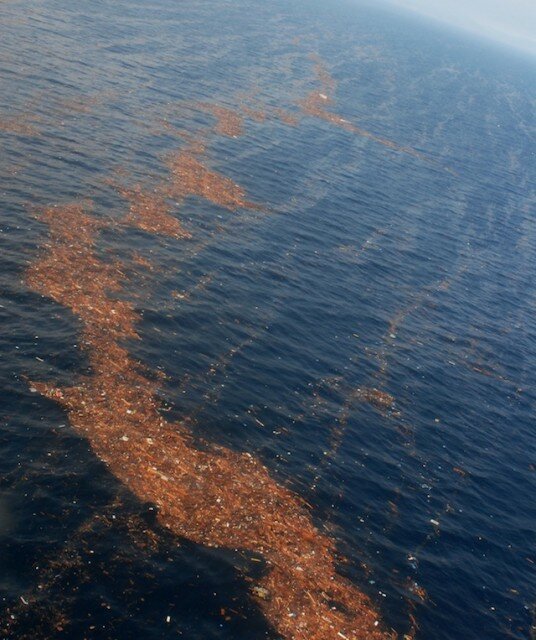The afternoon of March 11, 2011, a 9.0 earthquake shook northeastern Japan. But the utter devastation came ten to thirty minutes later, when a tsunami struck with waves ranging from six to an unimaginable 128 feet high. Signs of human habitation–more that 200,000 homes–were simply erased from the landscape. Thousands and thousands of lives were lost.
Observers watched from helicopters in horror. On the ground, dashboard cams recorded the way the tsunami swept everything before it.
But what cameras have not, so far, been able to record is the tsunami debris once it left the coast of Japan. Shots of the debris field dwindled as the wreckage–estimated at millions of tons–reached open ocean. Much of that could have sunk. But now, “[t]he fate of the remaining 1.5 million tons is causing concern in communities from Alaska to California, amid warning that the trickle of debris arriving on US shores could soon turn into a deluge.”
Retired University of Washington oceanographer Curtis Ebbesmeyer says the sporadic sightings we’ve seen up to now–boats, plastic and styrofoam–were just the the tip of the tsunami trash-berg. “It’s unprecedented in recorded history,” he says. Not the tsunami part, obviously, but the ability to follow an event of this size from one side of the Pacific to the other. According to his latest run of OSCURS (Ocean Surface CURrent Simulator), the leading edge of a 2,000-mile-long train of debris is arriving on the West Coast…right about now.
Willapa Bay has already seen plenty of marine debris, as has Vancouver Island, though because of the looming specter of clean-up costs, no one is in an official hurry to distinguish tsunami debris from “regular” flotsam.
Ebbesmeyer says he suspects the major storm off the coast in mid-November may have speeded things back up, after debris progress slowed over the summer. It’s still not clear to anyone where, precisely, the debris will end up and in what quantity. As a guesstimate, Ebbesmeyer says, oceanographers have been supposing one-third might hit Hawaii, one-third get caught up in the Great Garbage Patch, and one-third journey on to the U.S. coast.
Then too, not all might stay, once it arrives. Flotsam can travel in a “great orbit” in the Pacific for decades, says Ebbesmeyer, recalling that in 2004, beachcombers found a WWII-era object.
The best analogy for the impacts of tsunami debris, explains Ebbesmeyer, is the 150-ton concrete-and-metal dock that washed up on the Oregon coast. More than 50 feet in length and about ten feet “tall,” less than a foot of it was visible in the water. Like the debris field, it was almost impossible to spot in open water, a hazard to marine navigation, and a Trojan horse of sorts: the dock was carrying more than 90 different, potentially invasive, species that were destroyed.
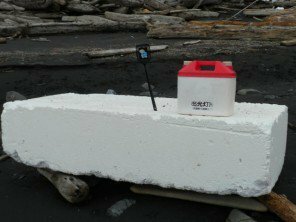
Ebbesmeyer has also found kerosene containers (it’s popular in northeastern Japan to heat homes with kerosene), and there remains the small chance that something innocuous-looking could be “hot.” (Ebbesmeyer hopes for prudence’s sake that Geiger-counter sweeps of beaches by park rangers or police will become routine.)
Mostly, he expects startling amounts of styrofoam–that makes up about 75 percent of marine debris. Marine birds will peck at it to see if it’s food and sea animals think the small pieces it breaks into are edible. But there’s no telling, really. Part of a house, “with most of the remains of a bathroom,” have already made the big float, he says. We’ll certainly see many more boats, parts of cars, fragments of houses.
But in terms of the clean-up, he’s optimistic. “Just give people the tools they need,” he advises, suggesting a massive-scaled “adopt-a-beach” program where people would be supplied with garbage sacks and trash-collecting tools, and given instructions on where temporary trash depots will be. He envisions a citizen’s beachcombing army ready to roll up their sleeves–and is even hopeful that they’ll aid in oceanographic research by reporting their findings at his Flotsametrics site.
“If you see something, say something,” in this case includes the date you saw it, a description and number of items, and possibly a photo. As a researcher, Ebbesmeyer was delighted at the prospect of camera-phone photos with embedded GPS data coming in. Of course, NOAA would like you to cc: them on debris reports as well. “If you see small debris, like bottles, aluminum, or Styrofoam, remove the debris from the beach and recycle as much as possible,” they say. For anything that looks hazardous, in Washington call 1-855-WACOAST (1-855-922-6278).
